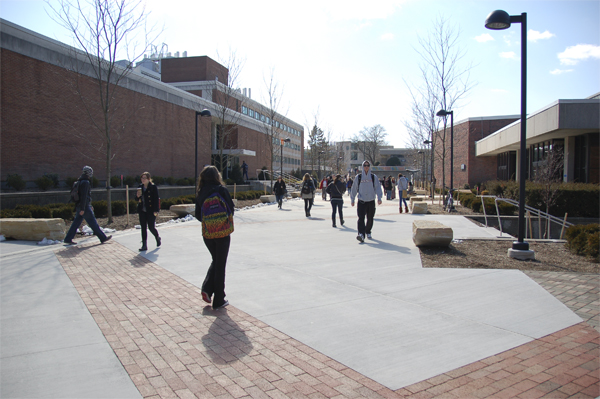

The acid neutralization tanks used on the first floor of Coykendall Science Building (CSB) overflowed March 10, causing the liquid inside the tanks to leak into the basement floor of the building.
SUNY New Paltz Environmental Health and Safety Director Mike Malloy said it is not the leak, but the tanks themselves that posed an issue.
“People hear acid tank and think ‘oh no, acid spilling,’” Malloy said. “The idea of an acid neutralization tank is if someone was pouring pure acid down the drain; before it gets to the town sanitary sewer, it’s got to be within a certain PH level to be safe.”
Malloy said in actuality, the contaminants that are put into these neutralization tanks are not acid or acidic in nature, and therefore the leaked liquid posed no threat to custodial staff or students.
Malloy said the liquids from science classes in CSB, diluted by water, enter these tanks from either drains or equipment washing machines.
The tanks, which hold marble or limestone rock meant to neutralize any acidic liquid going through to a suitable PH, do not actually make a notable difference in the liquid that comes in and the liquid that it puts out, said Assistant Director of Environmental Health and Safety Dave Serino.
“We test the tanks quarterly and get numbers between 6.7 and 7.5, which is basically neutral,” Serino said.
Malloy said the leak was likely caused by the tanks getting clogged with miscellaneous items often found in the tanks, like food or pen caps, or because the two equipment cleaning machines ran simultaneously, causing the tanks to overfill.
The disturbance of classes when having to clean out these tanks, along with the costly nature of removing and replacing the limestone rocks, is not worth the miniscule difference they make, Serino said.
The stone in the tanks cost $5,000 to replace, with the tanks being cleaned and replaced every two years, albeit a clog — causing overflow can make the removal and cleaning more frequent. The labor cost of having these stones removed and replaced is $10,000, Serino said.
“It’s a money pit, and it’s unnecessary,” Malloy said. “I’m looking to get rid of them.”
Chemistry Department Chair Dr. Pamela St. John said although students are instructed in the proper disposal of any sort of acidic material and no stark acidic material is put down the drains, the acid neutralization tanks provide an extra safety measure. In regard to Malloy’s idea of no longer using the tanks, St. John said she would want research done as to how other universities currently dispose of their potentially acidic liquids.
Malloy hopes to conduct a study that takes the two tank series and places a PH probe in one tank to collect data of the PH levels in the tank over a year while using the second tank as a settling tank to trap possible blockage to prevent another leak.
“I’m betting dollars to donuts I’ll never see an exertion of the acid level,” Malloy said, adding that the renovations to Wooster Science Building will not include these acid neutralizing tanks. “They installed the tanks in CSB in 1992 when they revamped the building and it was just normal protocol to do that in science buildings at that time. They didn’t do any calculations and realize there’s no need for it.”
